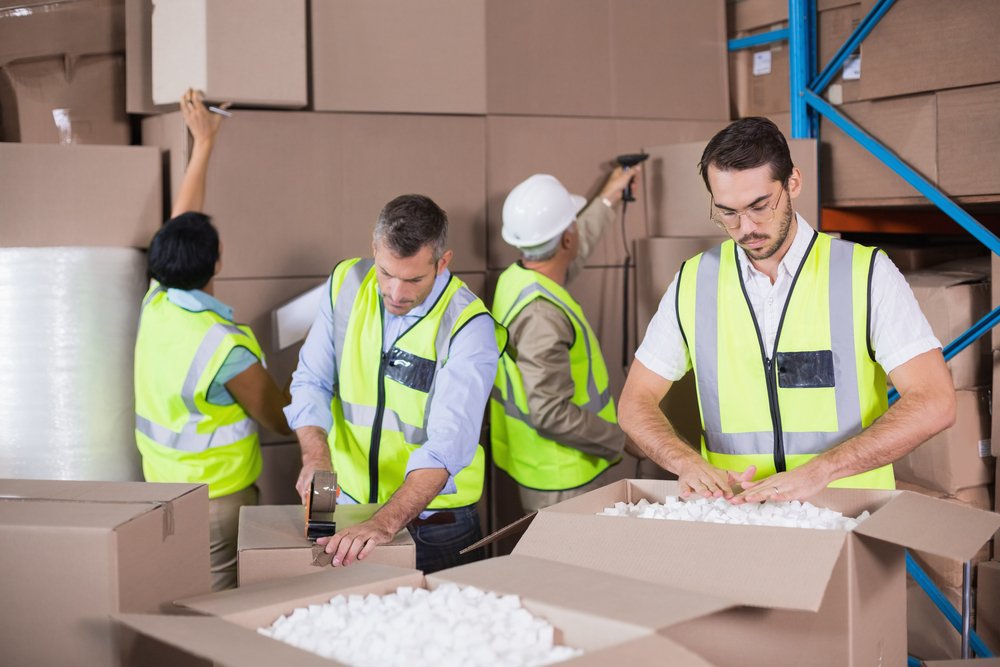Personalisation is changing the way retailers attract, engage and deliver to their customers; the result is smarter, more tailored marketing campaigns and offers that can reach leads more effectively. Now more than ever, customers expect you to know what they want and to keep up with competition, it’s imperative you fulfil their expectations.
Below are our five favourite examples of personalisation in retail and what you can learn from them.
1. Graze
Graze is a company that sells healthy snacks and delivers them to your door each week. When you sign up, you tell them what snacks you’re interested in and they choose a selection for just for you. Once you’ve received the box, you can give them your verdict on whether you liked the snacks or not, which helps them to pick out next week’s.
If you’re struggling with customer dissatisfaction, creating a campaign where your customers are actively involved like Graze could help. Often, when customers aren’t satisfied with their purchases, it’s because they didn’t get what they thought they were being sold.
What you can learn
If your customers have the chance to pick from a variety of different options (particularly if you’re selling similar items), then they’re more likely to be pleased with their purchase. It’s all about giving more power back to your customers.

2. Amazon
Most people have heard of the behemoth that is Amazon. As soon as you log in to Amazon, your name appears in the corner and you have the options to add things to your wish lists, browse items, track orders and so on. They even recommend certain products to you based off your browsing history.
Amazon has also worked hard on developing Prime that personalises experiences even more – for example, you can add films and TV shows onto your watch list on Prime Video.
What you can learn
Amazon is a classic example of personalisation in retail because of how well they can engage with their customers. For example, addressing customers by their first name as they shop helps them to feel valued and not one in a huge ocean of other customers. Tailored product recommendations and other prompts also encourage people to come back to shop repeatedly because they feel like their needs are being understood.
Why not start by putting a personalised greeting on your home page so that your customers will feel more welcomed?

3. Il Makiage
Il Makiage is a beauty retailer that boasts the best foundation skin match. New customers are asked to fill in a questionnaire about their skin and cosmetic preferences, and Il Makiage picks out a foundation and a shade that they think will suit the customer best.
What’s more, you can even return the product if you’ve used it and are dissatisfied. This is uncommon among retailers that offer personalised products.
What you can learn
Il Makiage is one of the best examples of personalisation in retail as they match specific products to specific customers. People feel understood straight away - something that’s really important in captivating potential leads.
Want to follow in Il Makiage’s footsteps? You could create a quiz or chatbot that can help match customers with the right products. This way, you’ll be able to engage with leads more effectively at the same time as making them feel special.

4. Nordstrom
Nordstrom is a retailer specialising in fashion that uses technology to appeal to their returning customers. When looking at a product, Nordstrom immediately suggests sizes, based on a customer’s purchase history. They have got to know their buyer persona and can deliver specific size recommendations time and time again.
What you can learn
When you deliver personalised recommendations based on purchase history, whether it’s size suggestions like Nordstrom or search results, you’re increasing the likelihood of a sale because you know what might be most interesting to your individual customer.
To perfectly execute this strategy, you’ll need to know your customers and store this information in an effective CRM system. CRMs collect customer data and are great if you have a large customer database.
Why not invest in a CRM so that you can collect and store all your customer data? You’ll then find that making tailored suggestions becomes much easier.

5. Nissan
Car manufacturer Nissan keeps track of every customer purchase and sets up different maintenance milestones for them. When it’s time for the car to be looked at, Nissan sends the customer a personalised email urging them to take care of the car.
What you can learn
Nissan builds their relationship with their customers by sending out these emails. Customers appreciate these personalised reminders - after all, it’s difficult to keep up with your car maintenance when you live a busy life. It also means Nissan is kept at the forefront of their minds when the time comes for car maintenance.
If you sell products that require maintenance, such as electronics, personalised reminders could be a great idea. Even if you don’t, you can still send personalised emails to your customers, filled with tips on how to take care of their items, how to style them, ‘did you know it could do this?’ and so on. You could even send product launches, promotional codes, sales and other business updates - personalised to your customer’s purchase and search histories.
It’s a fantastic way to offer your customers additional value even after their purchase, tailor content to their preferences and keep them coming back to you for more.

Personalisation can transform your retail
We hope you’ve seen how successful personalising your retail can be, but here are our top tips again (in case you missed them):
- Let customers pick from different options and offer you feedback
- Use personalised greetings on your website
- Create quizzes and chatbots to give specific suggestions to specific customers
- Invest in a CRM to collect customer data
- Send personalised emails based on their interactions with your brand
These five brands aren’t afraid of going big when it comes to customer engagement. Take the time to get to know yours, because once you’ve built a solid relationship with them, your retail is bound to change for good. New and returning customers will help to generate more products and revenue will boost.
These case studies and our tips are just a few ways in which you can improve your personalisation. Want to keep improving your business and revenue? Download our guide below to find out more.

